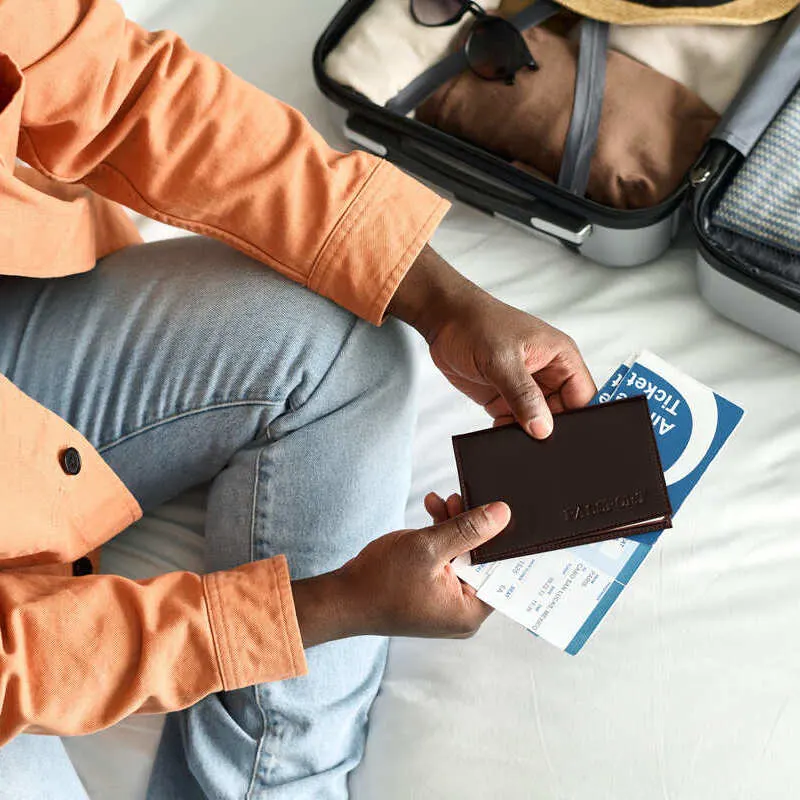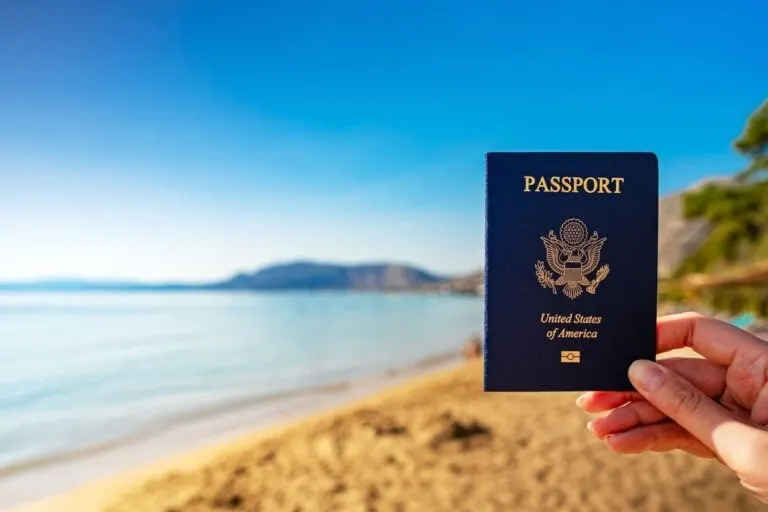Much like magnets and that chipped-off slab of the Berlin Wall you know is fake but you buy anyway, passport stamps can be incredibly fun to collect.
They tell a story and are ever-lasting proof you’ve been to that faraway destination you’d spent years dreaming of visiting.
However, something as small and (apparently) as insignificant as a stamp can, at times, get you into big trouble with authorities, especially when they’re not official.
In other words, when they do not result from an official border crossing.
We know you might be tempted to get your summiting of Machu Picchu stamped onto your passport pages, or swing by the tourism office in the European micro-state of San Marino, where there are no border checks, to get a souvenir stamp, but here’s why you absolutely shouldn’t:
You Should Think Twice Before Getting A Souvenir Stamp
Though they’re often placed in back pockets, tossed around, squeezed inside overflowing suitcases with little care, and even handled with dirty fingers, passports are incredibly fragile documents, and in most cases, they’re your only official form of identification you have outside your home country.
As they have a digital chip that contains all your personal information, they must be managed with care, protected from excess heat and humidity, not folded, and not have any significant tears.
Despite being issued to different individuals, they are in fact the property of a sovereign state, and that’s an important detail a majority of travelers, who mistakenly believe it is like any regular booklet for personal use, often don’t know.

Only border officers and consulate officials are authorized to effect changes on passports—this includes issuing stamps and writing—as the document’s main purpose is to record your travel history, length of stay in different countries, and visa approvals and refusals.
Now, summiting Machu Picchu or ticking Petra off the bucket list does not count as official travel records, as visiting those does not entail crossing an international border, and any stamps issued in tourist sites are, well, personal souvenirs.
Passports should not be stamped by non-officials or non-consular authorities, and that is the lesson Tina Sibley, a seasoned U.K. traveler in her sixties, learned the hard way:
Denied Boarding Or Refused Entry: You Pick

Having country-hopped around the globe, she was used to getting commemorative passport stamps for bucket-list sites even though they weren’t issued by any formal authority; you know, that cute little print or sticker you get when you travel on a heritage tramway or reach the peak of a mountain?
Well, as Mrs Sibley would find out in her trip to Thailand, her Machu Picchu stamp in fact rendered her passport invalid, and she was denied boarding a Qatar Airways flight: ‘I thought the guy was having a laugh. But no.’
After trying to rebook through a different airline, this time with Emirates, only to be turned away again over the tiny novelty stamp that celebrated her visit to the World Wonder of Peru, she realized her only option would be to apply for a new passport.

She’s not the only one faced with souvenir stamp woes as of late:
Brazilian travel expert Rafaela Molas also fell victim to a Machu Picchu stamp when attempting to fly out of Thailand, except she was lucky to be granted authorization to board the flight, after a long 40-minute wait at the gate, and a lot of arguing.
In the end she got lucky, but she was let off with a stark warning from airport staff: ‘renew your passport as soon as you can, or you might face similar issues flying abroad in the future’. Not the exact words, but something along those lines.
What Are Some Of The Most Popular Novelty Stamps To Get?

In recent years, novelty stamps have become incredibly popular across tourist hotspots, with some famous examples including:
- The Chichen Itza stamp, issued by non-officials to tourists visiting the historic archaeological zone in Mexico
- The ‘Checkpoint Charlie‘ stamp, referring to the former border post controlling movement between East and West Germany, now only a memorial in Berlin
- The already-mentioned Machu Picchu stamp, that tourists can get at the little souvenir shop at the left entrance of Machu Picchu as proof they’ve been to the site
- The Antarctic Heritage stamp, issued informally to tourists who have set foot in the uninhabited continent
- This is a long one: the Llanfairpwllgwyngyllgogerychwyrndrobwllllantysiliogogogoch stamp, which commemorates visits to the town with the longest name in Britain
- The Petra stamp, marking a visit to the well-preserved ancient city carved into rock in the arid hinterlands of Jordan
- European micro-state stamps: Andorra, Liechtenstein, Monaco, San Marino, Vatican City ‘Pilgrim’ stamps*
*As these micro-states are surrounded by the border-free Schengen Zone, they do not issue visas and with the exception of certain entry-points into Andorra, they do not administer their own borders, thus passport stamps are not required, nor available at official entry points
What Does The U.S. State Department Say?
According to a U.S. State Department official, Americans are advised against putting souvenir stamps in their passports, as they can be considered ‘damage’ to the document: ‘only authorized officials of the United States or of foreign countries may place stamps or make notations or additions (…)‘.
This is clearly stated on page five of all U.S. passports (See image below), warning holders that the ‘alteration or mutilation’ of a passport (and this includes non-official stamping) is unauthorized (if you’re an American citizen, you can check for yourself).

The only valid stamps are the ones you get when crossing a border, issued by a border officer; any other alterations could be perceived by officials as being ‘damage’, and render the travel document invalid, regardless of the size of the stamp, the passport’s validity, or its overall good state.
This could lead to denied boardings, or worse even, refused entry at a foreign country, regardless of whether you fulfill all the other criteria.
Do This At Your Own Risk
You see travel tips like this one? Follow them at your own risk:
That being said, there have been numerous cases of travelers who have traveled with souvenir stamps clearly visible on their passports, and have had no issue, as most border guards merely glance briefly at their passports before stamping them in, without flicking through the pages.
The thing is, you just never know: you might turn up to a border one day, and meet a more meticulous border guard who will promptly spot the eye-catching Machu Picchu, or the Monaco, San Marino or Liechtenstein souvenir stamp you got from a local souvenir shop.
They may let you off that one time, or they might send you packing on the next flight home.
@travelbrilliant Never put a souvenir stamp in your passport. It can, and will invalidate your passport. Why risk it? #travelbrilliant#travelagent#traveltiktok#travelbetter#travelinfluencer#traveltips#traveltipsoftiktok
You just never know, so it’s best to just avoid getting those stamps, as once again, a passport is a Government-issued document.
This still shouldn’t deter you from collecting novelty stamps, though not with your passport: you can always get them stamped elsewhere, like a travel journal.
And remember, handle your passport with care: in places like Bali, as little as a slight tear on the ID page, that’s barely noticeable, can make you ineligible to enter, not to mention weathered passports with damaged covers that have seen better days.
Other Lesser-Known Passport Rules You Should Know

Other passport rules to be aware of include ensuring you have enough months left of validity, as some countries will require your passport to be valid for a whole six months following the intended date of departure (that is the case across the European Union).
For example, if you’re due to travel to France between August 1 and August 7, and your passport expires on September 7, a month after your date of return, chances are you won’t even be allowed to board, let alone into the country.

Additionally, make sure you have enough blank pages left: a majority of countries will require at least one full blank page for stamps—there’s yet another reason why you shouldn’t be so eager on collecting as many stamps as possible—while others will require at least four.
Always check passport and entry requirements for your destination in advance, and ensure your document fulfills all the relevant criteria.
$2 Souvenir Stamps Can Eventually Set You Back Thousands Of Dollars

If you ever run into passport-related issues and you’re denied boarding over novelty stamps, tears, or lack of blank pages, emergency passports can typically be issued on the same day, but it will still require filling out the DS-5504 form and paying a $165 fee.
An emergency passport’s validity is limited to one year or less, and they are not biometric documents. Some airlines may still refuse to carry you, or some countries may still refuse you entry on an emergency passport as it does not have an embedded electronic chip.
In sum, steer clear of souvenir shops issuing $2 novelty stamps that will eventually become a huge hassle and set you back hundreds, if not thousands of dollars for a last-minute passport renewal and/or flight changes that may be necessary.
Finally, make sure the document is protected at all times when traveling abroad.
Credit: Source link



